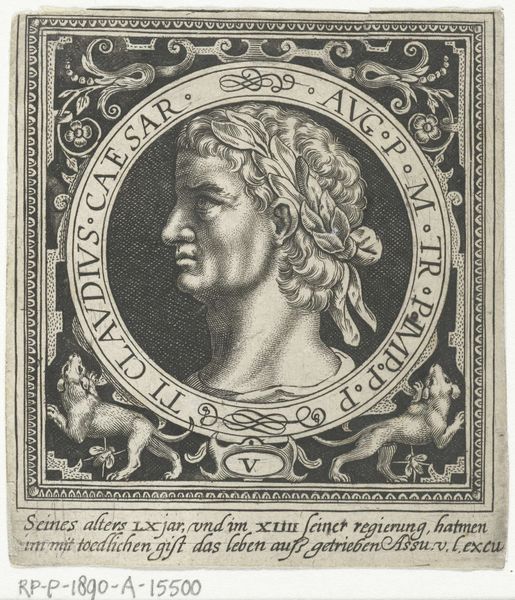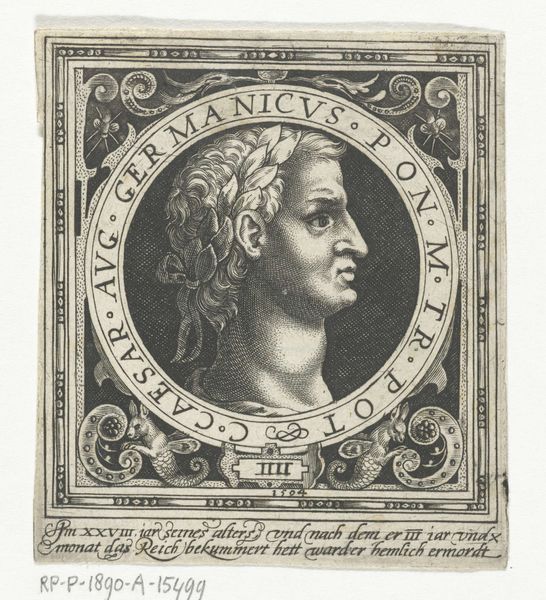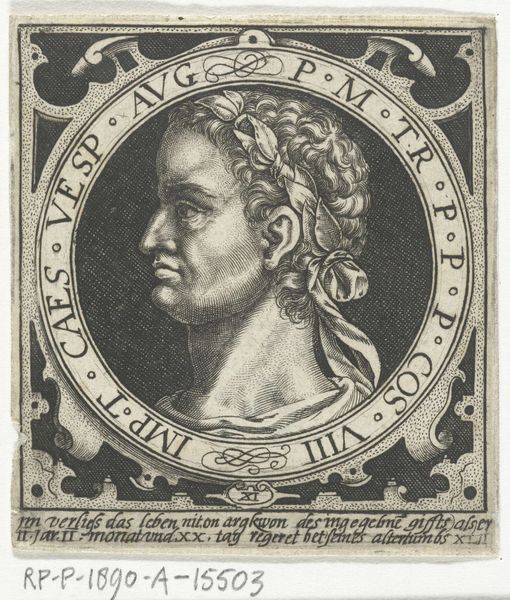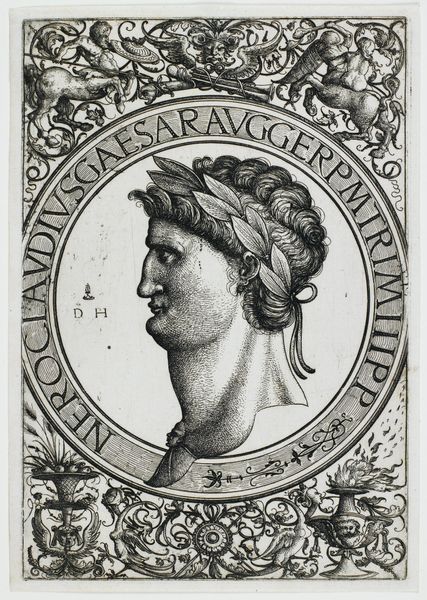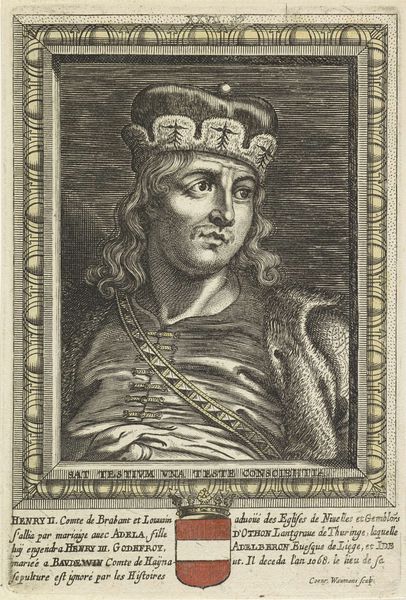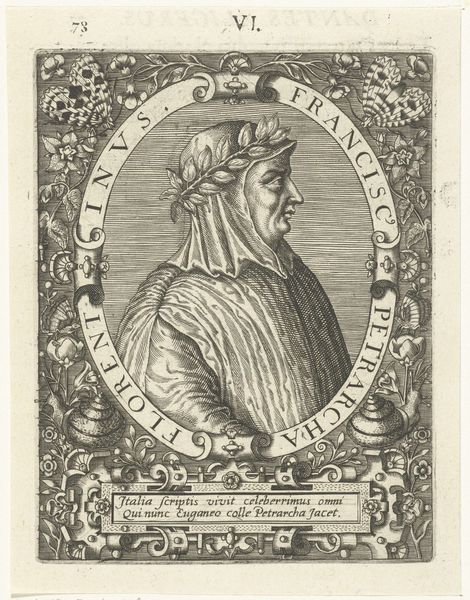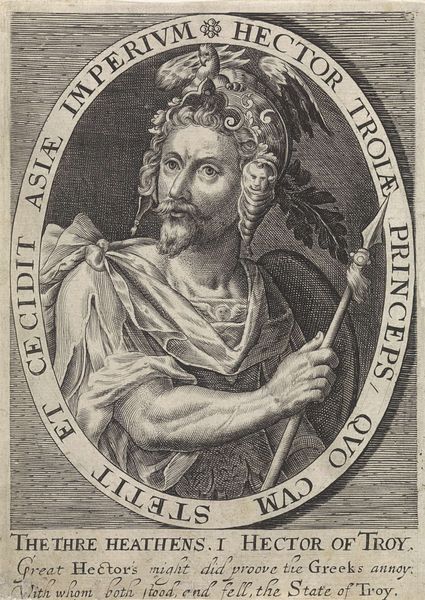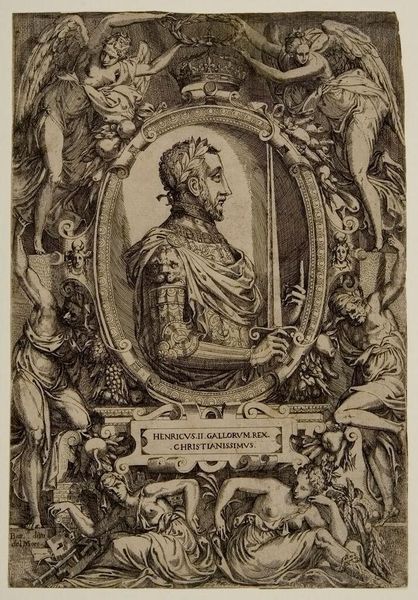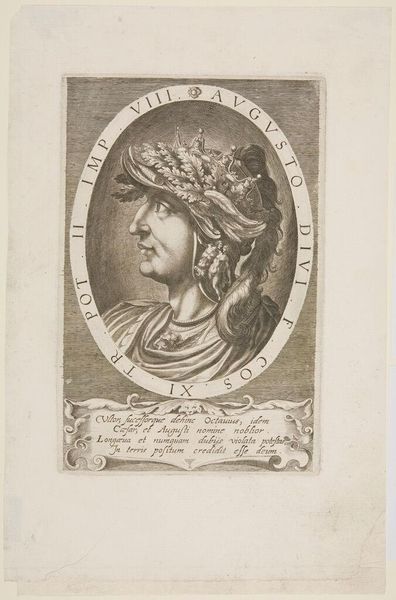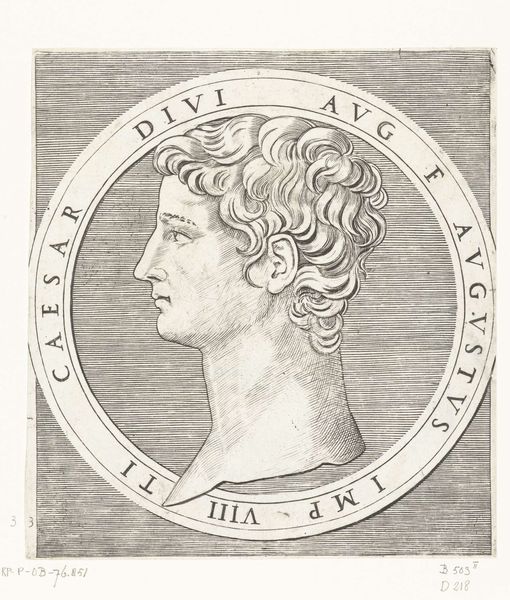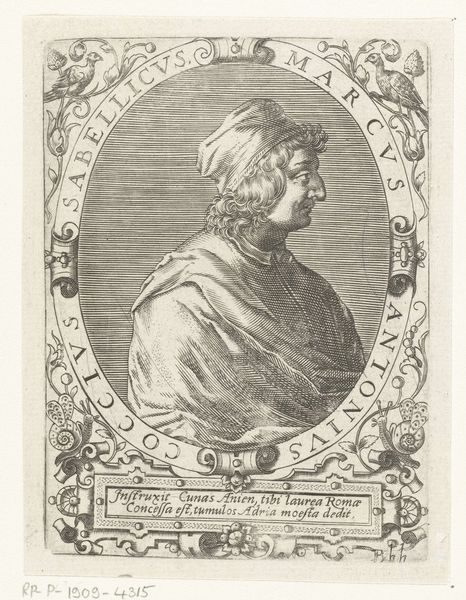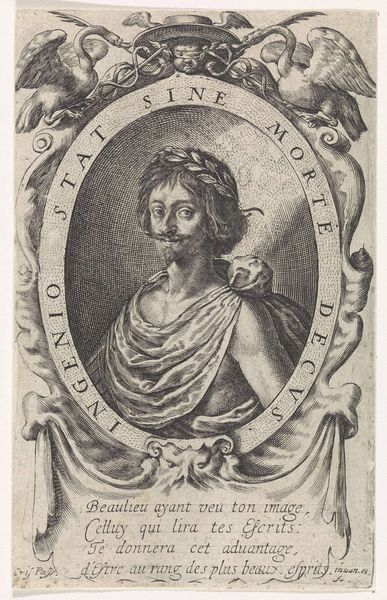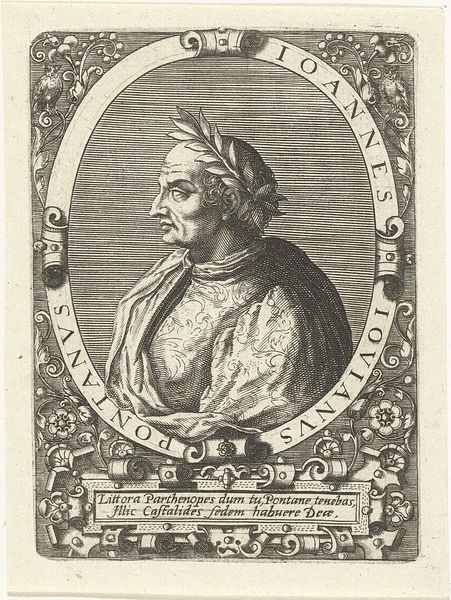
print, intaglio, engraving
#
portrait
#
medieval
# print
#
intaglio
#
old engraving style
#
figuration
#
11_renaissance
#
carved
#
line
#
history-painting
#
engraving
#
historical font
Dimensions: height 73 mm, width 65 mm
Copyright: Rijks Museum: Open Domain
Nicolaes de Bruyn created this print of Emperor Nero on a medallion sometime before his death in 1656 using etching. In the 17th century, powerful images of classical figures were more than mere portraits. They were tools that could legitimize a ruler’s authority, or undermine it. The symbols surrounding Nero’s portrait are telling. De Bruyn has set Nero within a laurel wreath, a classical symbol of victory and imperial power, yet there is also an inscription in early modern Dutch and German that tells us of Nero’s death by suicide, alluding to Nero’s infamous tyrannical reign. Made during the Dutch Golden Age, this image would have circulated among a population that had only recently overthrown their own foreign ruler and religious dogmas. This was a society that invested heavily in a free press and the open circulation of information. As art historians, we can look to the archives of early modern Europe, including published books, political pamphlets, and other artworks to understand how the figure of Nero was mobilized during this time.
Comments
No comments
Be the first to comment and join the conversation on the ultimate creative platform.
